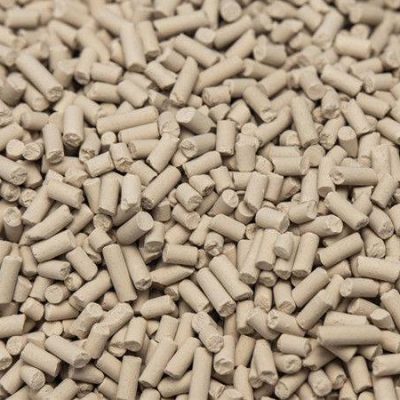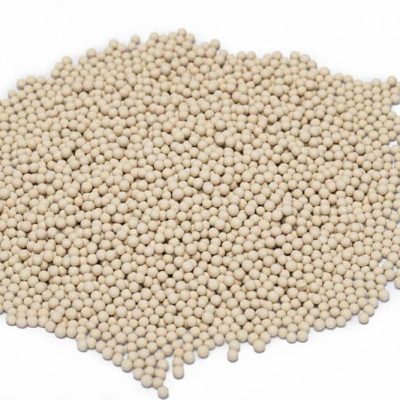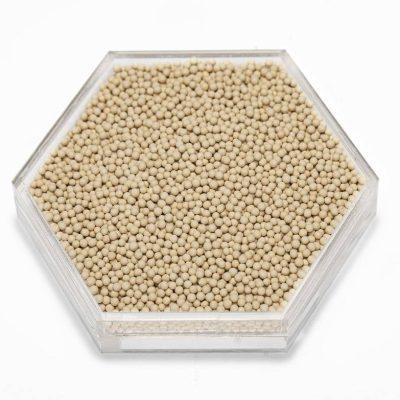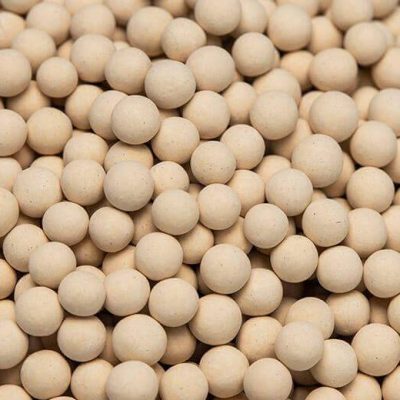In the world gas separation and purification is used in many industries.Molecular sieve is high performance adsorbent with excellent kinetic gas adsorption and separation capacity. Moleular sieve is widely used in various industries such as cryogenic air separation, PSA&VPSA oxygen generator, hydrogen purification, natural gas dehydration, ethanol dehydration, ethylene dehydration, propylene dehydration, ethanol dehydration, refrigerant dehydration, air break system, insulating glass, etc.
Molecular sieve is a kind of adsorbent or membrane material with uniform micropores, mainly composed of silicon, aluminum, oxygen and other metal cations. Its pore size is equivalent to the general molecular size, and various fluid molecules are screened according to its effective pore size. Zeolite molecular sieves refer to those natural and synthetic crystalline aluminosilicates that have molecular sieve function.
Zeolite molecular sieves are crystalline silicates or aluminosilicates, formed by silico-oxygen tetrahedrons or alumino-oxygen tetrahedrons connected by oxygen bridges to form pores and voids of molecular size. Cavity system, which has the characteristics of sieving molecules. However, with the in-depth research on the synthesis and application of zeolite molecular sieves, researchers have discovered phosphoaluminate zeolite molecular sieves, and the framework elements (silicon or aluminum or phosphorus) of zeolite molecular sieves can also be composed of B, Ga, Fe, Cr, Ge, I, V , Mn, Co, Zn, Be, and Cu, etc., and the size of the pores and cavities can reach 2 nm or more. Therefore, zeolite molecular sieves can be divided into silicon-aluminum zeolite molecular sieves, phosphorus-aluminum zeolite molecular sieves and framework heteroatom zeolite molecular sieves according to the composition of the framework elements.
Divided by channel size, zeolite molecular sieves with channel sizes less than 2 nm, 2~50 nm and greater than 50 nm are called microporous, mesoporous and macroporous molecular sieves, respectively. Due to its large pore size, it becomes a good carrier for large-size molecular reactions, but the pore wall of the mesoporous material is amorphous, so that its hydrothermal and thermal stability cannot meet the harsh conditions required by petrochemical applications.
Because it contains metal ions with a low electricity and a large ion radius and water in a combined state, water molecules are continuously lost after heating, but the crystal skeleton structure remains unchanged, forming many cavities of the same size, and the cavities have many diameters. The same micropores are connected. These tiny pores have uniform diameters, which can adsorb molecules smaller than the pore diameter into the inside of the pores, while repelling molecules larger than the pores, so that molecules with different shapes and diameters can be excluded. Molecules with different degrees of polarity, molecules with different boiling points, and molecules with different degrees of saturation are separated, that is, they have the function of “sieving” molecules, so they are called molecular sieves. At present, molecular sieves are widely used in metallurgy, chemical, electronics, petrochemical, natural gas and other industries.
Molecular sieve is a kind of aluminosilicate crystal. Because the pore size of zeolite molecular sieve is uniform, only when the molecular dynamics diameter is smaller than that of zeolite molecular sieve can it easily enter the cavity and be adsorbed. Therefore, zeolite molecular sieve is like a sieve for gas and liquid molecules. According to the size of the molecule to determine whether to be adsorbed. Because the zeolite molecular sieve has strong polarity in the crystalline cavity, it can interact with the molecules containing polar groups on the surface of the zeolite molecular sieve, or by inducing the polarization of the polarizable molecules to produce strong adsorption. This kind of polar or easily polarized molecule is easily adsorbed by polar zeolite molecular sieve, which reflects another adsorption selectivity of zeolite molecular sieve.
There are two main methods of molecular sieve regeneration: heating and high temperature regeneration and vacuum regeneration. Since the adsorption does not cause chemical changes, as long as you try to drive off the molecules that are concentrated on the surface, the zeolite molecular sieve has adsorption capacity again. This process is the reverse process of adsorption, called activation, or desorption or regeneration. Molecular sieve activation refers to the process in which adsorbates such as moisture adsorbed by the molecular sieve are driven out of the molecular sieve through high-temperature heating or vacuuming, so that the molecular sieve can restore the adsorption capacity.
Jalon’s proprietary manufacturing processes use the automated system production lines process control systems.Formed a complete industrial chain of adsorption materials, making the production of adsorption materials more intensive and large-scale.Jalon Company has passed ISO9001 certification, and having a complete and strict internal control system process. At the same time, The company has a provincial R & D center. And we cooperate with Jilin University and Beijing University of Science and Technology to improve product performance and develop new products according to customer’s special requirements. Besides our company values environmental protection.
Production flow of molecular sieve
Synthetic zeolite powder/Clay
↓
Mixing
↓
Forming
↓
Drying/Calcination
↓
Packing
Jalon is one of the best zeolite molecular sieve manufacturers in China and around the world. We have continued to offer incredible options to all our customers for more than 20 years. We provide molecular sieves of the best quality to accurately cater to your needs.
Our molecular sieves beads and pellets are applicable in different industries, some of which include medicals, refineries, natural gas, coal chemical, and oxygen generation among others. Our expertise in the supply of quality molecular sieves has allowed us to work with clients from all over the world.
We pride ourselves on providing reliable and quality molecular sieve desiccant, which come in different sizes and shapes.
Zeolites are crystalline aluminosilicates with molecular sieving attributes, which makes them being broadly used for catalysis, sorption, and ion exchange applications. Here are the following zeolite powder uses:
Introduction
3A molecular sieves feature average pores measuring 3 angstroms (0.3nm), any molecules larger than 3 angstroms will be immediately sieved out. 3A mol sieves are widely used for specific needs in varied industries including ethanol dehydration, cracked gas dehydration, refrigerant dehydration, and natural gas dehydration among others.


Introduction
The diameter featured in 4A mol sieves comes in at 4 angstroms (0.4nm). This allows the sieve to easily exclude molecules with a larger diameter. 4A molecular sieves is the preferred adsorbent for the static dehydration in a closed gas or liquid drying system.
Introduction
We offer 5A molecular sieves designed and developed by the best in the business. Our 5A molecular sieves feature a diameter of 5 angstroms(0.5nm). This allows you to exclude any particles or molecules that have a larger size in diameter.


Introduction
13x molecular sieve is designed to ensure that its performance in an application is top-notch. The 13x molecular sieve features a diameter of 10 angstroms (1nm). This goes to show that all particles and molecules larger than 1nm will be excluded.
Introduction
We offer CAX molecular sieves designed and developed by the best in the business. Our Molecular Sieve CaX is the calcium form of the type X crystal and has a much larger pore opening than the type A crystals.Calcium X (CaX) and Calcium LSX (CaLSX) are the calcium-exchanged forms of the 13X and LSX type zeolites. It will adsorb molecules with a kinetic diameter of less than9 Angstrom (0.9nm) and exclude molecules of larger than 0.9nm.


Introduction
JALON Molecular sieve JLOX-100 series is designed for oxygen concentrator that has high-efficiency nitrogen adsorption, JLOX101 molecular sieve is a lithium X-type(LIX Zeolite) aluminosilicate crystal, adsorb nitrogen from the air while allowing the oxygen to pass get purified enriched-oxygen through the system pressure swing adsorption(PSA) in a medical oxygen concentrator devices. It has the characteristics of large nitrogen adsorption capacity, high nitrogen and oxygen separation coefficient, and easy desorption. Its nitrogen adsorption capacity is 2-3 larger than the A-type oxygen molecular sieve.
Our professional engineers are ready to help your project
